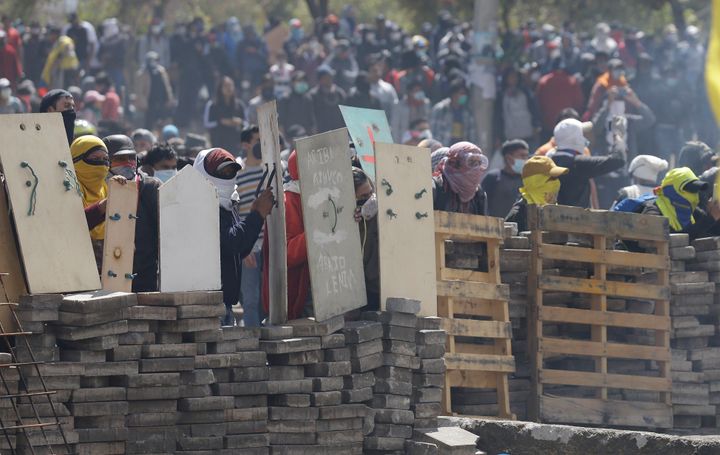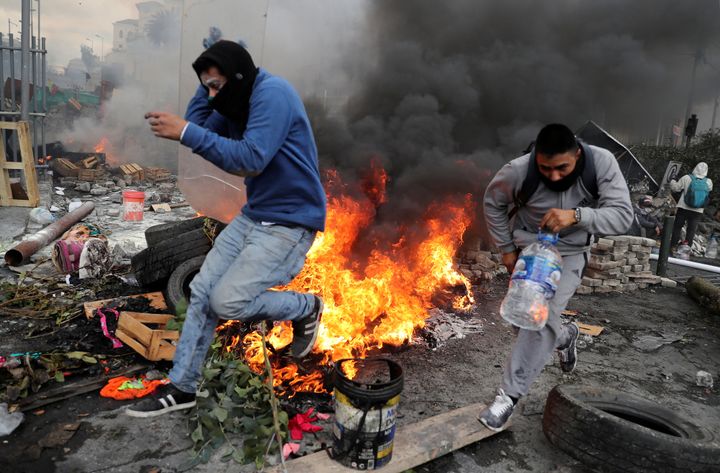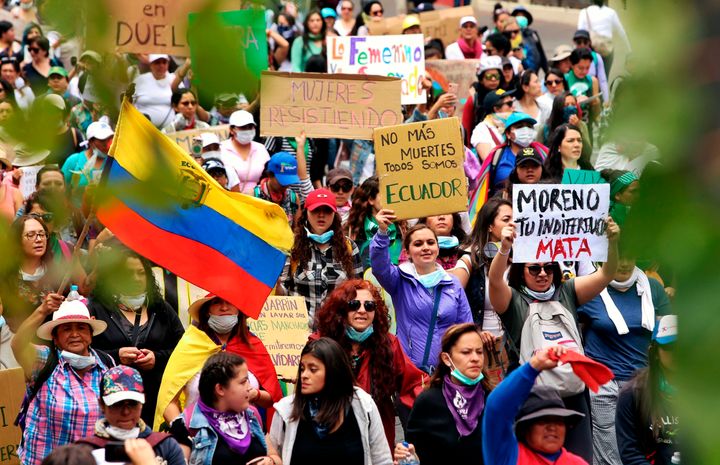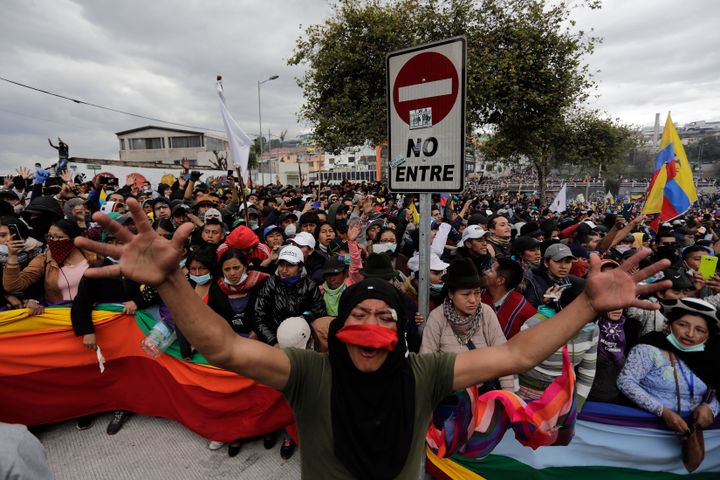The streets of downtown Quito resembled a warzone on Saturday as the tenth day of protests against President Lenin Moreno’s austerity plan sparked a violent police crackdown.
Plumes of tear gas clouded roads littered with bricks and small fires, as groups of people huddled behind walls and makeshift barricades for protection.
The latest violence is another escalation in a confrontation that has already forced the President Moreno to move out of Quito, fearing for his safety.

At least four protesters have died and hundreds have been wounded and arrested, after indigenous leaders mobilised thousands of protesters to the streets in the South American country of 17 million.
What sparked the protests?
The clashes erupted before the scheduled start of the latest protest to demand Moreno repeal a law he passed last week that ended a four-decade long fuel subsidy, Reuters reports.
The subsidy, on which much of the population depend, was a key part of his efforts to rein in the fiscal deficit after signing a $4.2 billion loan deal with the International Monetary Fund (IMF).
But opponents say higher fuel prices have pushed up the cost of many consumer goods, hitting indigenous and poor people the hardest.
The IMF is unpopular in much of Latin America and leaders have faced pushback on structural changes that the organisation has promoted.
Argentine President Mauricio Macri was trounced in an August primary vote amid stiff opposition to an IMF deal he signed last year.

Who is leading the protests?
The protests are being led by an umbrella organisation that represents indigenous groups across the country, headed by chief organiser Jaime Vargas.
They first erupted last week when truck drivers took to the streets, but indigenous protesters have since taken the lead, with villagers from the highlands walking and hitching rides to reach Quito.
Representatives of Amazonian tribes, many carrying spears, streamed into the city late Thursday and early Friday, adding opposition to oil drilling to a growing list of complaints about Moreno’s government.

How has the government responded?
Moreno has repeatedly refused to overturn the measure and instead proposed direct talks with indigenous leaders.
The unrest has led Moreno’s government to flee the capital for a safer city on the coast and curbed nearly 900,000 barrels of crude production in the OPEC-member nation.
Moreno has said authorities have faced extreme acts of violence and accused, without evidence, Venezuelan President Nicolas Maduro and former Ecuadorean president Rafael Correa of sending people to stir up unrest in the protests.
Maduro and Correa deny the accusations.

Is this enough for the protestors?
Many indigenous leaders have dismissed talks with the government as an attempt to distract and divide them.
They have also called for an end to police violence that human rights groups say has been disproportionate.
On Friday, after Moreno proposed direct talks with protest organisers for the first time, police fired tear gas at a crowd of protesters who had gathered peacefully at the National Assembly, according to Reuters witnesses.
Protesters are furious about what they described as disproportionately violent attacks by police. As protest organisers churned out videos showing wounded protesters, Moreno’s government has remained largely silent.
It abruptly cancelled a scheduled Saturday news conference.

What’s the current situation?
Nearly 20 food markets in Quito closed their doors due to the threat of violence, according to the District Retail Coordination Agency, which represents the city’s markets.
The agency said groups of protesters demanded several markets close early on Saturday.
Outside of Quito’s historic district, the main centre of conflict, streets were empty and shops shuttered in the city’s northern and southern districts, a Reuters witness said.
At least four people have been killed in the unrest and hundreds have been wounded and arrested.
Oil wells have been closed by protesters in parts of the country, curbing production of more than 1 million barrels of crude so far, the energy ministry said on Saturday.
A Chinese-owned copper mine announced it was temporarily limiting its operations as a precautionary measure.
The United Nations reiterated its offer to help mediate the conflict. “We’re ready to support an efficient and inclusive process to generate lasting solutions for development and peace in the country,” the UN’s branch in Ecuador said on Twitter.
